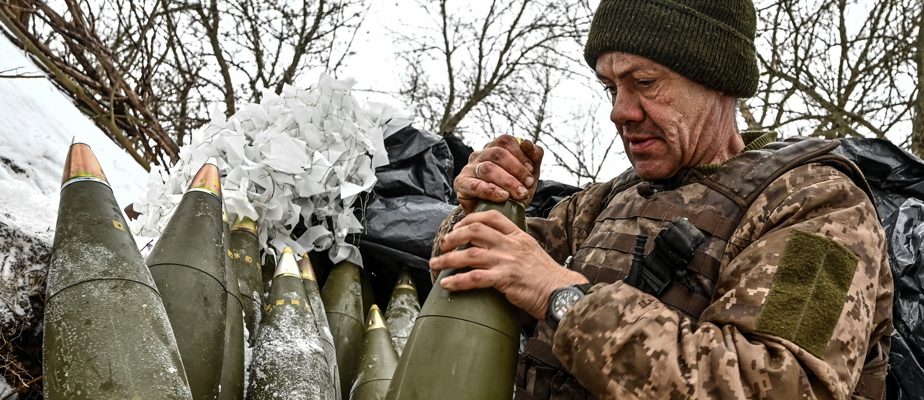Canadian shells
The General Dynamics company is capable of producing 155 mm artillery shells in its factories in Quebec. What is stopping the Canadian government from placing a (large) order for shells to help Ukraine in its fight to survive?
Peter Solonysznyj
Ukraine’s needs for 155 mm shells are estimated at 2 million units… per year of war. “The quantity required is absolutely staggering,” reacts Dominique Arel, holder of the Chair of Ukrainian Studies at the University of Ottawa. Since April 2022, Canada has delivered a fraction, or 40,000. Of this figure, 20,000 were first supplied to Canada by the United States and the rest came from Canadian army stocks, according to the site government web. To give a new order to a factory and increase production, investments are necessary, underlines Mr. Arel. “If Canada makes the decision to invest in the military, we must make budgetary choices, while there are other crises [qui demandent aussi du financement] », he adds.
Reinforcement soldiers

PHOTO ARCHIVES REUTERS
Soldiers move on a road near the front line in the Zaporizhia region of southern Ukraine.
Even if Ukraine is not part of NATO, wouldn’t it be time to send reinforcements?
Josette Leroux
“The easy answer is that NATO countries do not want to enter into a direct war with Russia, and they have no obligation to defend Ukraine, which is not part of the alliance,” says Maria Popova, associate professor in the political science department at McGill University. Canada participates in the training of Ukrainian soldiers, as it has already done since 2015, but does not fight in Ukraine. Taking part in a war is above all a political decision, just like sending military equipment. “This is the case in Europe as in Canada: there are more discussions than actions,” notes Mme Popova.
Risks in the Arctic

PHOTO MARTIN TREMBLAY, LA PRESSE ARCHIVES
A reader wonders about Russia’s expansionist aims in the Arctic.
Taking into account that there is already a dispute between Canada and Russia regarding the ownership of the seabed in the Arctic, that the Russian icebreaker fleet is much larger and more powerful than that of Canada and with the possibility of Donald Trump’s return to the presidency, what is the risk that Russian ambitions will turn towards the Arctic?
Luc Desmarais
The prime ministers of Canada’s three territories have expressed concern after the start of the large-scale Russian invasion of Ukraine, fearing an expansionist policy reaching as far as the Arctic, documents obtained by The Press. “The first reality that is emerging more and more clearly is that we are going to have a common border [accessible] with Russia, because of climate change, says Mr. Arel. The second reality, which we did not see coming, is American political instability which seems to be here to stay. » U.S. presidential hopeful Donald Trump said he would let Russia invade NATO countries that don’t pay their share, a troubling assertion for an ally like Canada – which doesn’t pay the 2 agreed % of its GDP for military spending.
Diplomacy and negotiations

PHOTO CHARLY TRIBALLEAU, AGENCE FRANCE-PRESSE
The UN Security Council held a meeting on Russia’s war in Ukraine on February 23.
How can Western countries financing the war in Ukraine enter into peace negotiations with Russia? A good question of diplomacy.
Samir Djaoued
It’s a question that comes up often: can Russia and Ukraine reach a compromise? Experts are pessimistic in the current context. Russia had already undertaken, in 1994, to respect the independence of Ukraine in exchange for the withdrawal of atomic weapons from the territory. Even if Ukraine agreed to cede regions to Russia to end the war, there would be no real guarantee that weapons would be laid down for good, Mr. Arel believes. Western countries would, moreover, be rather poorly placed to negotiate with Russia. Turkey tried to play this role in March 2022. An agreement for the exchange of prisoners was concluded under the aegis of the United Arab Emirates last January.
In Putin’s head

PHOTO ALEXANDER KAZAKOV, ASSOCIATED PRESS ARCHIVES
Vladimir Putin, President of Russia, on February 22
I know it’s difficult – if not impossible – to be inside Putin’s head, but I would like to understand: what is his ultimate goal?
Marleen Provençal
“Vladimir Putin has said many times that Ukraine is historically part of Russia – whether that means conquering it and annexing it to Russia proper or installing a shoddy government, keeping the country officially independent, but controlled by Russia,” explains Mme Popova. Her vision could extend to other countries of the former Soviet Union, she suggests. His decisions, however, are more calculated than they seem. “At the beginning, we feared that Russia would have “red lines” that should not be crossed, because Putin was making nuclear threats,” says M.me Popova. Two years later, we know that Russia is not an irrational actor and is not going to escalate the conflict into a nuclear confrontation. » She cites as proof the withdrawal of Russian troops where the Ukrainians have managed to regain the upper hand.
Write to us with your questions about “Super Tuesday,” a milestone in the American primaries
